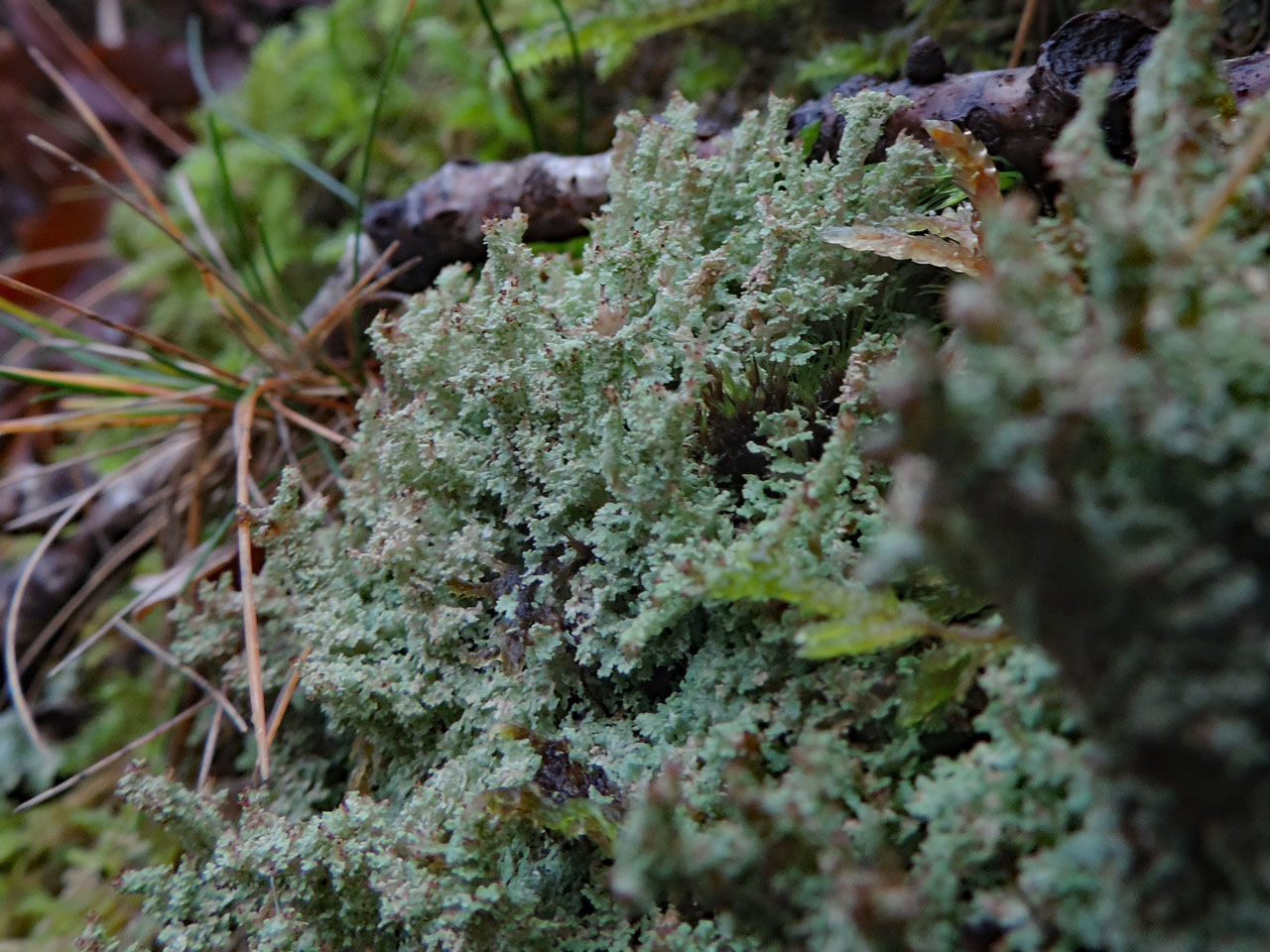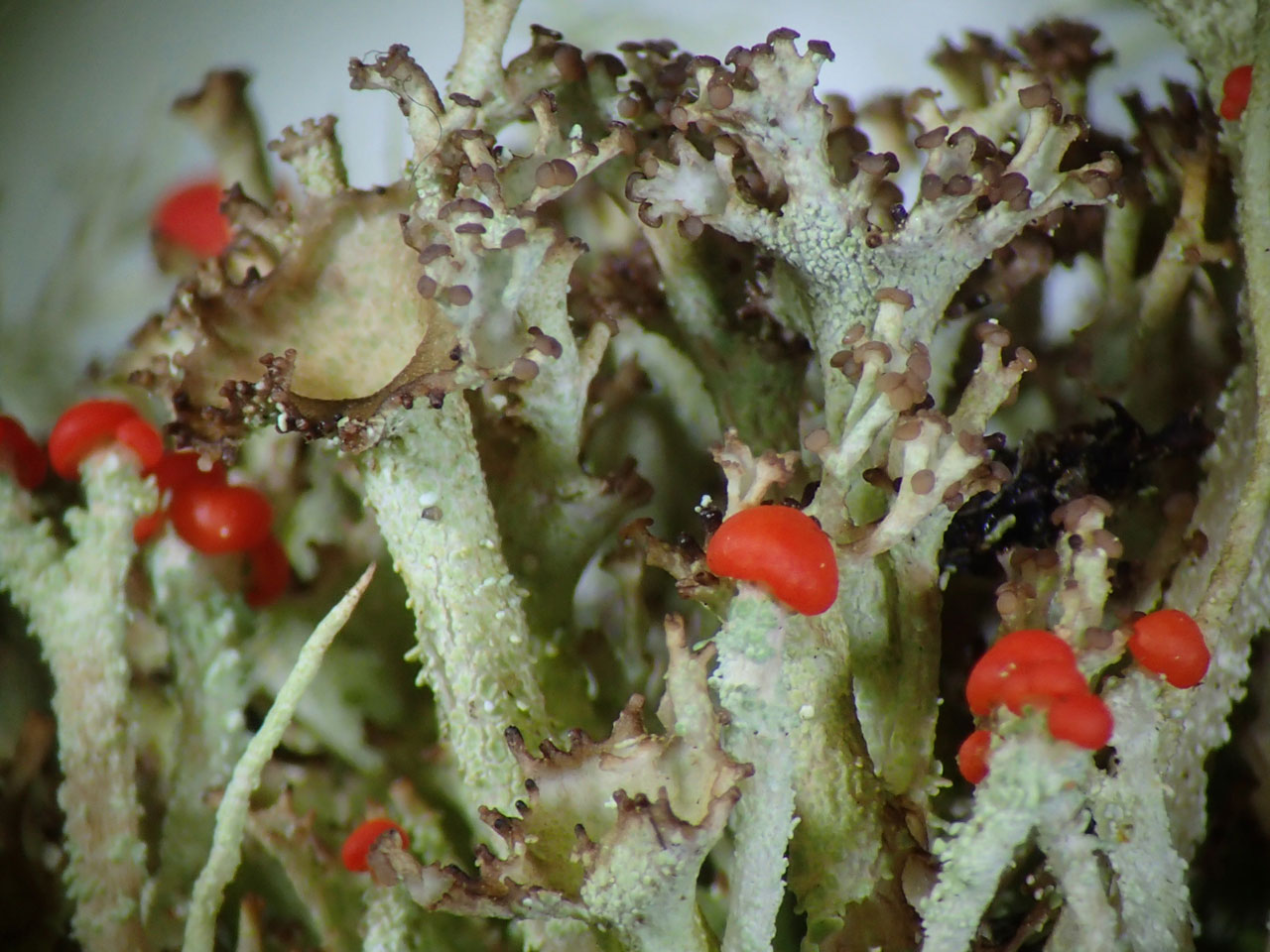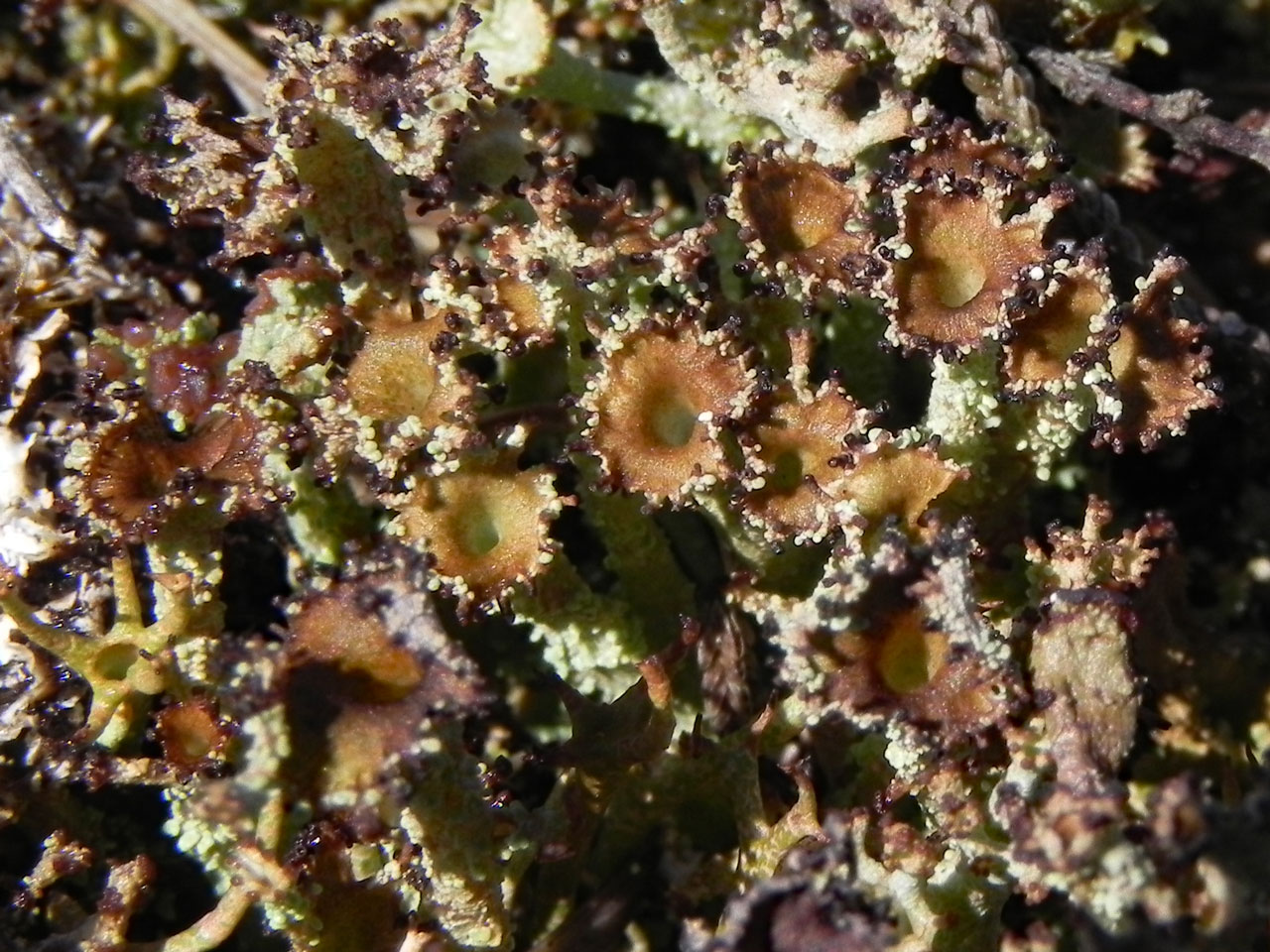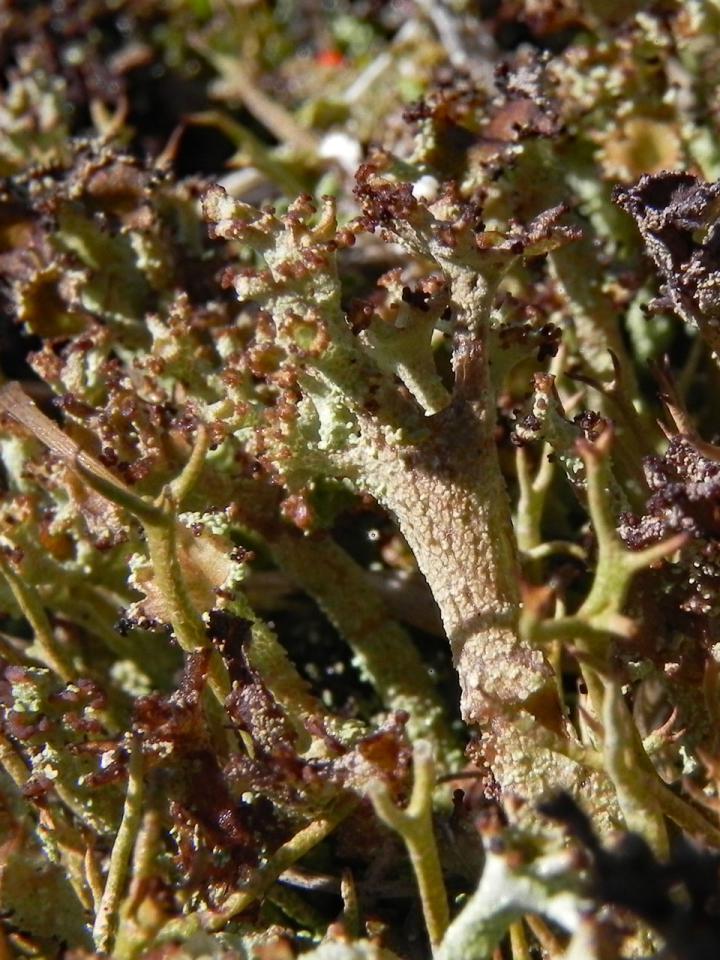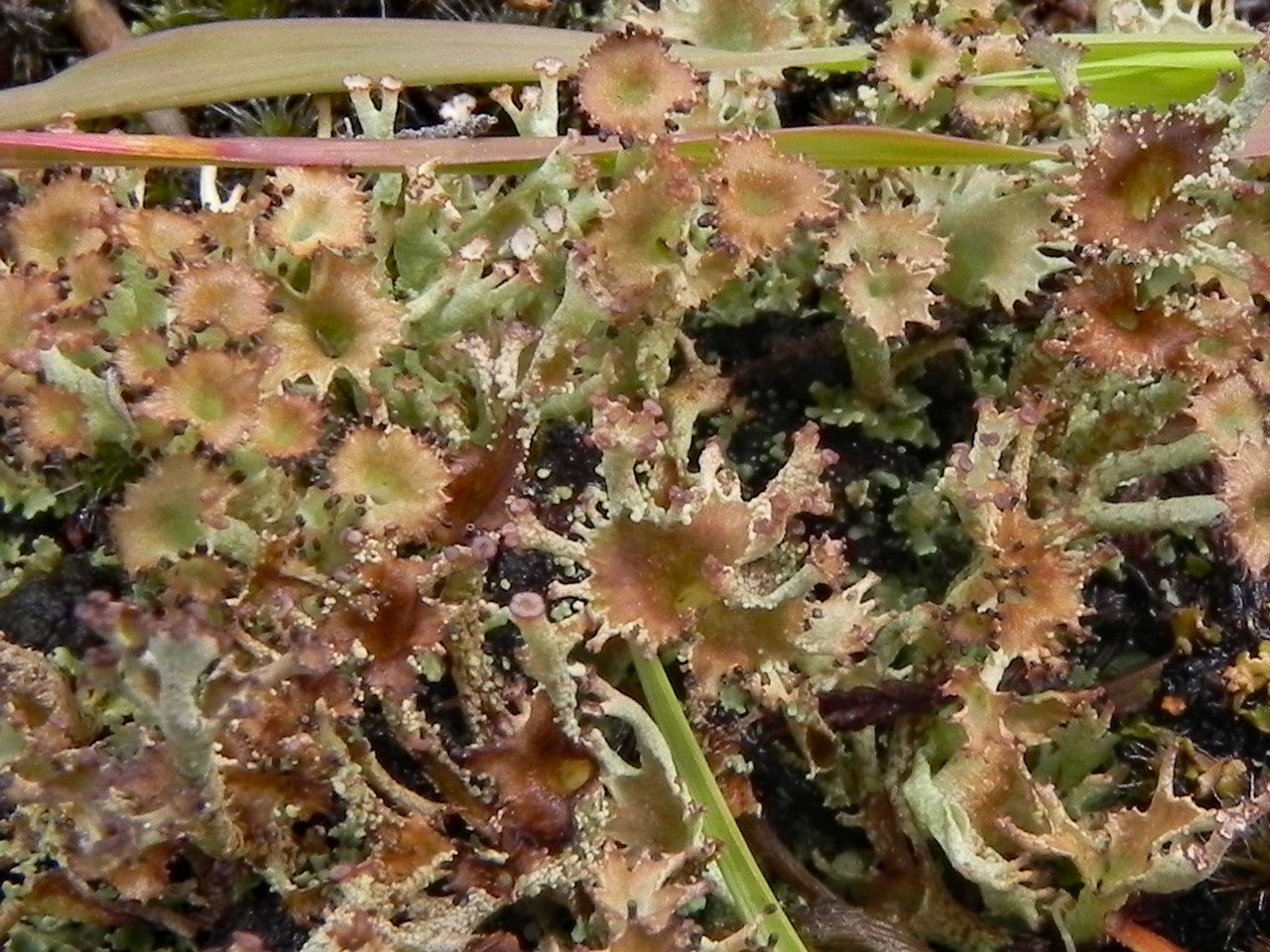Cladonia squamosa s. lat.
This map only shows records entered to the database as s. lat., there are separate maps for those assigned to the component taxa.
A common and very variable Cladonia with very different appearances in different habitats. The typical morph of damp shaded habitats are characterised by a perforate podetia, with a narrow flaring cup with a pale interior, numerous peeling squamules and absence of soredia. In some morphs, typically in open low productivity heaths, the podetia have a ± intact cortex and a more strongly developed perforate trumpet like cups with glossy chestnut interiors. There are two chemotypes, chemotype A: thallus C–, K–, KC–, Pd–, UV+ vivid white (squamatic and ± barbatic acids; or chemotype B: C–, K+ yellow-orange, KC–, Pd+ orange, UV– (thamnolic and ± barbatic acids which have been recorded as separate varieties. They do show some ecological separation in the frequency of the chemotypes with populations but thamnolic and squamatic acids are very closely related biosynthetically and a taxonomic distinction is questionable.
Podetia 2–5 cm tall, green to grey-brown, the branching irregular, the apices pointed or with an irregular, usually narrow (to 2 mm diam.) perforate trumpet like cup (up to twice as wide with a glossy chestnut interior in well-developed heathland morphs), the cups often dentate and proliferating from the rim, the surface scabrid, covered in numerous squamules, particularly at the base, these derived from peeling of the cortex, often leaving extensive decorticate areas (in contrast, large heathland morphs have a cracked cortex with few peeling squamules). Basal squamules to 2 mm diam., indented, often forming compact mats. Apothecia and pycnidia brown, at the apices of podetia; apothecia rather small, rare, when well-developed often in corymbose clusters. Thallus C–, K–, KC–, Pd–, UV+ vivid white (squamatic and ± barbatic acids; chemotype A) or C–, K+ yellow-orange, KC–, Pd+ orange, UV– (thamnolic and ± barbatic acids; chemotype B).
Very variable with typical morphs characterised by the perforate podetia, numerous peeling squamules and absence of soredia. In some morphs, typically in open low productivity heaths, the podetia have a ± intact cortex and a more strongly developed cups, in which case they can resemble Cladonia crispata var. cetrariiformis. In these cases the surface of the podetia is nearly always finely roughened and scabrous, a feature absent in the other species.
Populations (common throughout our region) with a more robust and consistently more densely squamulose thallus, which reacts C–, K+ yellow-orange, KC–, Pd+ orange, UV– (thamnolic and ± barbatic acids), have been separated as Cladonia squamosa var. subsquamosa. This taxon is considered to be a chemotype of C. squamosa and not worthy of formal recognition since thamnolic and squamatic acids are very closely related biosynthetically and the morphological distinction is questionable. The distinctive robust heathland morph with wide cups with a glossy chestnut interior is mainly the subsquamosa chemotype but may vary, sometimes apparently within the same thallus. For the time being this taxa and Cladonia squamosa var. squamosa are still being recorded by the BLS mapping scheme.
On heathland, earth banks, rotting wood, old tree stumps, tree trunks and mossy rocks by streams and in woodland.

Common throughout Britain and Ireland in uplands and acid areas in the lowlands, less frequent in more fertile lowland areas.
Pino-Bodas, R., Sanderson, N., Cannon, P., Aptroot, A., Coppins, B., Orange, A. & Simkin, J. (2021). Lecanorales: Cladoniaceae, including the genera Cladonia, Pilophorus and Pycnothelia. Revisions of British and Irish Lichens 19: 1-45. Link
Text by Neil A Sanderson, based on Pino-Bodas et al (2021)
